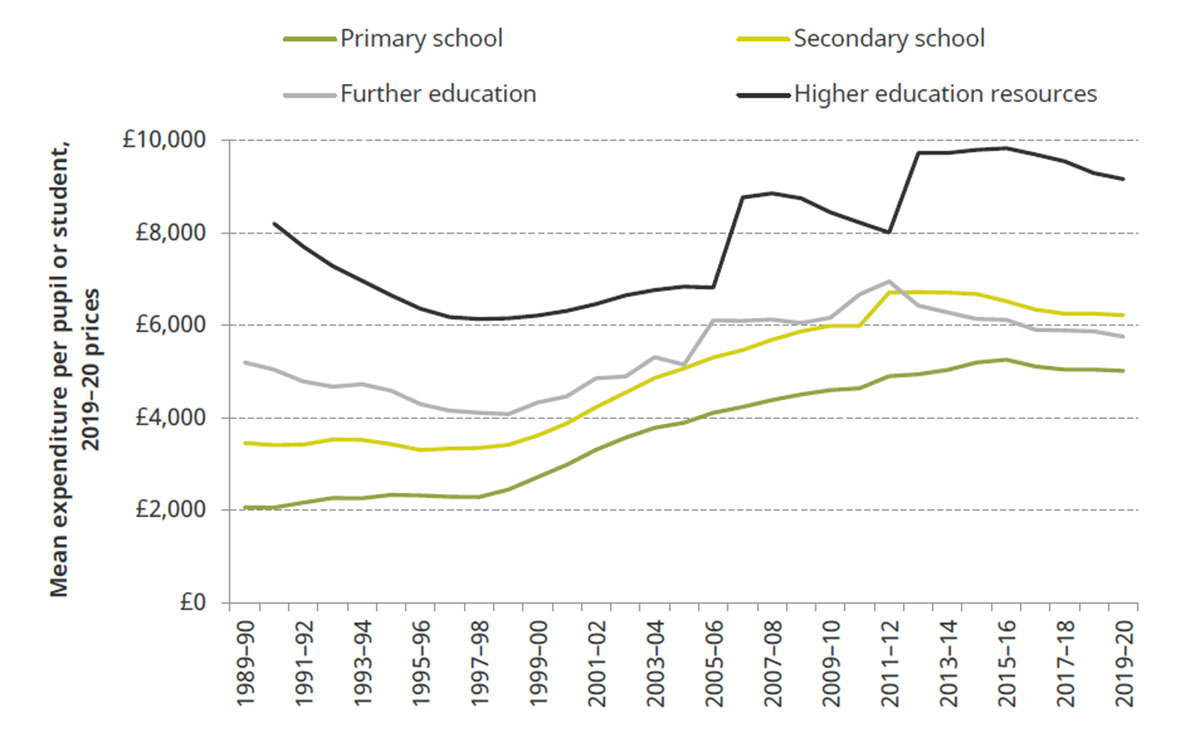
Education
Education - schools, further education and higher education
Education spending is the second-largest element of public service spending in the UK, representing about £91 billion in today’s prices or about 4.2% of national income.
Both Labour and the Liberal Democrats have pledged spending increases for schools, further education, and higher education in their manifestos, with Labour promising substantially higher sums. The Conservatives have pledged to reverse recent cuts to school spending and to spend more on further education. These spending plans come against the backdrop of very large changes in spending over the past 30 years. As the graph (Fig. 1) shows, spending per pupil is already higher at all levels of education than it was in the early 2000s. However, this increase in per-pupil funding has partially been reversed in the last five years, with falls in real funding across all levels.
Figure 1. Spending per pupil or student per year at different stages of education: actual and plans (2019–20 prices)

Detailed analysis across schools, further education and higher education
Schools - Find out more >>>
Further Education - Find out more >>>
Higher Education - Find out more >>>
Useful resources
Election 2019 analysis
Going further on further education?
What are the main parties’ spending proposals for young people in further education and sixth forms, and for adult education? To what extent will they reverse the cuts we’ve seen to date?
Seven charts on the £73,000 cost of educating a child
The amount spent on schools is a major topic in this year's election campaign. So, where does all the money for educating the country's children go?
Higher Education Funding: more change to come?
This Election Briefing Note provides a summary of the current higher education funding system in England and investigates the two big reform packages that are currently on the table going into the 2019 General Election.
Social media
The Conservatives pledge to increase school spending in England by £7.1 billion in cash terms by 2022–23.
— IFS (@TheIFS) November 25, 2019
This would just about reverse cuts made since 2009–10. However, this would still leave spending per pupil no higher in 2022–23 than it was 13 years earlier. pic.twitter.com/lzwHxpCcnn
Background analysis
Report



